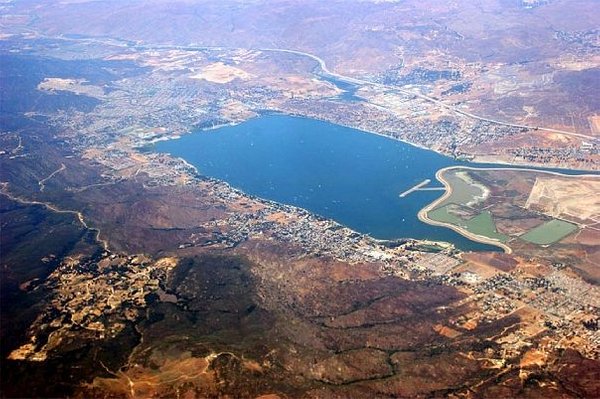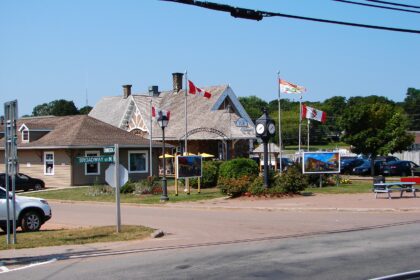Lake Elsinore is a city in western Riverside County, California, United States. Take a look below for 20 amazing and interesting facts about Lake Elsinore, California, United States.
1. Established as a city in 1888, it is on the shore of Lake Elsinore, a natural freshwater lake about 3,000 acres (1,200 ha) in size.
2. The city has grown from a small resort town in the late 19th and early 20th centuries to a suburban city with approximately 70,000 residents.
3. Native Americans have long lived in the Elsinore Valley. The Luiseño people were the earliest known inhabitants. Their pictographs can be found on rocks on the Santa Ana Mountains and in Temescal Valley, and artifacts have been found all around Lake Elsinore and in the local canyons and hills.
4. Overlooked by the expedition of Juan Bautista de Anza, the largest natural lake in Southern California was first seen by the Spanish Franciscan padre Juan Santiago, exploring eastward from the Mission San Juan Capistrano in 1797.
5. In 1810, the water level of the Laguna Grande was first described by a traveler as being little more than a swamp about a mile long.
6. Later in the early 19th century, the lake grew larger, providing a spot to camp and water their animals for Mexican rancheros, American trappers, the expedition of John C. Frémont, and the immigrants during the California Gold Rush as they traveled along the southern shore of the lake on what later became the Southern Emigrant Trail and the route of the Butterfield Overland Mail.
7. On January 7, 1844, Julian Manriquez acquired the land grant to Rancho La Laguna, a tract of almost 20,000 acres (8,100 ha) which included the lake and an adobe being built near the lake on its south shore at its western corner that was described by Benjamin Ignatius Hayes, who stayed there overnight January 27, 1850.
8. In 1851, Abel Stearns acquired the rancho and sold it in 1858 to Augustin Machado. Augustin Machado built a seven-room adobe ranch house and an outbuilding on the southwest side of the lake. Soon after, Rancho La Laguna became a regular stop on the Butterfield Overland Mail route between Temecula 20 mi (32 km) to the southeast and the Temescal station 10 mi (16 km) to the northwest.
9. The old Manriquez adobe was used as the station house. Over the years, a framed addition and a second story were added, and it was used as a post office for the small settlement of Willard from 1898 until September 30, 1902. The building stood until it was razed in 1964, at what is now 32912 Macy Street. Today, three palm trees still grow in front of the site along Macy Street in front of the property.
10. As a result of the Great Flood of 1862, the level of the lake was very high, so the Union Army created a post at the lake to graze and water their horses. In the great 1862–65 drought, most of the cattle in Southern California died and the lake level fell, especially during 1866 and 1867, when practically no rain fell. However, the lake was full again in 1872, when it overflowed down its outlet through Temescal Canyon.
11. While most of the old Californio families lost their ranchos during the great drought, the La Laguna Rancho remained in the hands of the Machado family until 1873, when most of it was sold to Englishman Charles A. Sumner. Juan Machado retained 500 acres (200 ha) on the northwest corner of the lake, where his adobe still stands near the lake at 15410 Grand Avenue.
12. After 1872, the lake again evaporated to a very low level, but the great rains in the winter of 1883–84 filled it to overflowing in three weeks. Descriptions of the lake at this time say that large willow trees surrounding the former low-water shore line stood 20 ft (6.1 m) or more below the high-water level and were of such size that they must have been 30 or more years old. This indicated the high water of the 1860s and 1870s must have been of a very short duration.
13. On October 5, 1883, Franklin H. Heald and his partners Donald Graham and William Collier bought the remaining rancho, intending to start a new town. In 1884, the California Southern Railroad built a line from Colton through the Cañon de Rio San Jacinto (now Railroad Canyon) to link with San Diego, and a rail station La Laguna appeared near the corner of what is now Mission Trail Road and Diamond Drive.
14. On April 9, 1888, Elsinore became the 73rd city to be incorporated in California, just 38 years after California became a state. Originally, Elsinore was in San Diego County, but the city became part of Riverside County upon its creation in 1893. It was named Elsinore after the Danish city in Shakespeare’s “Hamlet”, which is now its sister city (Helsingør). Another source maintains Elsinore is a corruption of “el señor”, Spanish for “the gentleman”, because the city site had been owned by a don.
15. The rainfall until 1893 was greater than normal, and the lake remained high and overflowed naturally on three or four occasions during that time. The lake water was purchased by the Temescal Water Company for the irrigation of land in Corona. Its outlet channel was deepened, permitting gravity flow down the natural channel of Temescal Canyon to Corona for a year or more after the water level sank below the natural elevation of its outlet.
16. As the lake surface continued to recede, a pumping plant was installed and pumping was continued a few seasons, but the concentration of salts in the lake, due to the evaporation and lack of rainfall, soon made the water unfit for irrigation and the project was abandoned by the company.
17. From the beginning, the mineral springs near the lake attracted visitors seeking therapeutic treatments. In 1887, the Crescent Bath House, now known as “The Chimes”, was built; it still stands in historic downtown and is a registered national historic site. By 1888, the economy was supported by coal and clay mining at what became the town of Terra Cotta, gold mining in the Pinacate Mining District, ranching, and the agriculture of fruit and nuts.
18. After 1893, the lake’s water level sank almost continuously for nearly 10 years, with a slight rise every winter. Heavier precipitation, beginning in 1903, gradually filled the lake to about half the depth above its minimum level since 1883. Then, in January 1916, a flood rapidly raised the level to overflowing.
19. Lake Elsinore was a popular destination in the first half of the 1900s for celebrities to escape the urban Hollywood scene. Many of their homes still stand on the hills surrounding the lake, including Aimee’s Castle, a unique Moorish-style house built by Aimee Semple McPherson. Also, actor Bela Lugosi, known for his lead role in Universal Pictures’ film, Dracula, built a home that still exists in the city’s Country Club Heights district.
20. During World War II, the lake was used to test seaplanes, and a Douglas Aircraft plant making wing assemblies for Boeing B-17 Flying Fortress bombers was located in the city.




